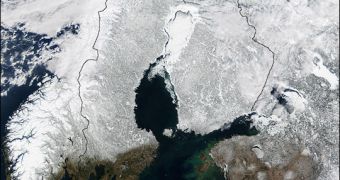While studying the human remains found in two ancient Danish burial sites dated as far back as the iron age researchers from the University of Copenhagen discovered the remains of a man that appears to be of Arabian origin, meaning that during the iron age humans were much more mobile than previously though and that Danish people living in small isolated communities may be nothing but a myth. The two sites are located in the Zealand island of Denmark and are known as Bogebjerggard and Skovgaarde.
A comparison of the mitochondrial DNA of 18 individuals shows that the genetic variations are somehow characteristic to our times.
"If you look at the geographic position of Denmark, then it becomes clear that the Danes must have been in contact with other peoples. We know from other archaeological excavations that there was a good deal of trade and exchange of goods between Denmark and other parts of Scandinavia and Europe. These lines of communication must have extended further south as one of the Danish burial grounds, which dates back to the iron age also contained the remains of a man, who appears to have been of Arabian origin", said Linea Melchior of the University of Copenhagen.
Considering that during the Iron Age Romans advanced as far as to the river Elbe, it's not totally unimaginable for the man to have been brought here by the Roman legions, either as a slave or as a soldier; once here, he could have settled in the southern regions of the Zealand island, where he would have been buried as all of the Danish inhabitants.
"This discovery is comparable to the findings of a colleague of mine, who found a person of Siberian origin on the Kongemarke site", said Melchior. Just like the Arab man, he was buried in the tradition of the Danish people, suggesting that people coming from distant locations on the globe were welcomed and absorbed into the community.
Melchior reckons that the Danish identity, as in the case of other peoples, is more related to the locations were they have settled, rather than to race. After all, the African continent is considered to have been the cradle of humans, not Europe. The colonization of Europe was inevitable and accidental.
"Another interesting feature of the approximately 50 graves assessed so far on the two sites and also from other burial sites and time periods in Danish history is that none of the individuals seem to be maternally related to one another. We couldn't see any large families buried in the same location. This suggests that in the Danish iron age, people didn't live and die in the villages of their birth, as we had previously imagined", Melchior said.

 14 DAY TRIAL //
14 DAY TRIAL //